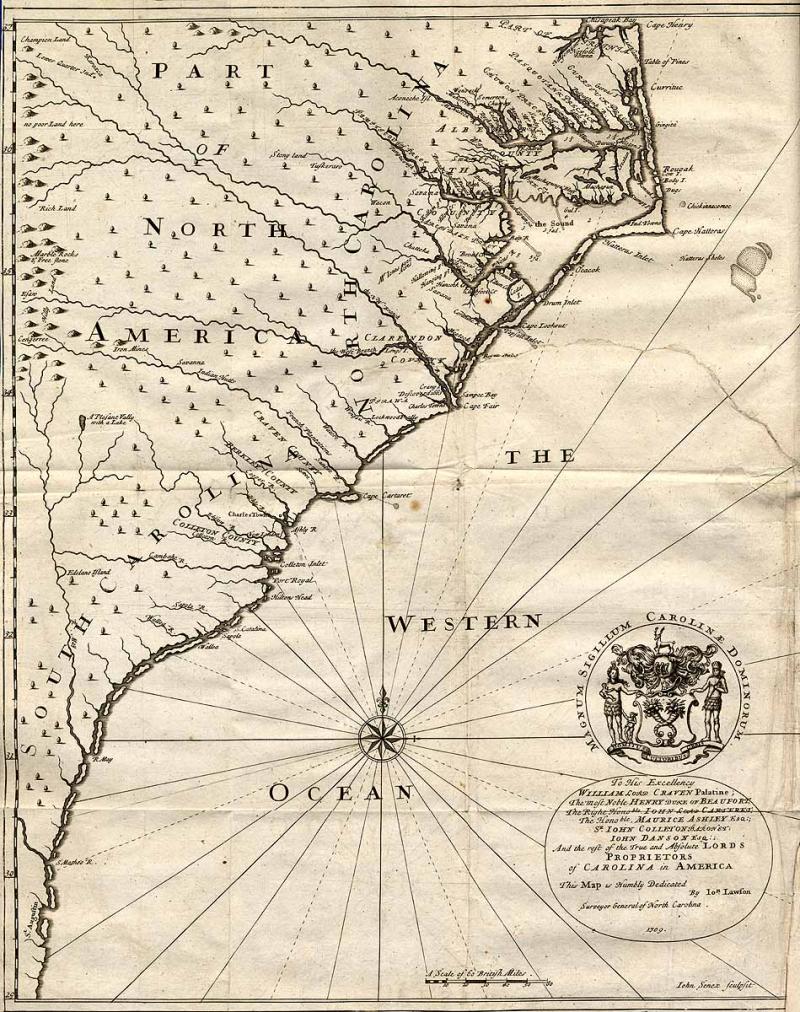1709 map of North Carolina
An early representation of North Carolina. The map, published in 1709, shows the coast and the Outer Banks, and includes the names of the major inlets and rivers. The western part of the state is represented by open space dotted with tree and mountain icons, and labeled with vague designations such as "Rich Land," "Iron Mines," and "Indian Hutts."
For a larger version of the map, click here.

Lawson, John. To His Excellency William Lord Palatine; The most Noble Henry Duke of Beaufort; The Right Honoble. Iohn, Lord Carteret; The Honoble Maurice Ashley, Esq., Sr. John Colleton Baronet; Iohn Danson, Esq; And the rest of the True and Absolute Lords Proprietors of Carolina in America This Map is Humbly Dedicated by Ion. Lawson Surveyor General of North Carolina. 1709. Map. 37 x 30 cm. North Carolina Collection, UNC Chapel Hill Libraries, https://dc.lib.unc.edu/cdm/singleitem/collection/ncmaps/id/2641/rec/6.
Public Domain
Public Domain is a copyright term that is often used when talking about copyright for creative works. Under U.S. copyright law, individual items that are in the public domain are items that are no longer protected by copyright law. This means that you do not need to request permission to re-use, re-publish or even change a copy of the item. Items enter the public domain under U.S. copyright law for a number of reasons: the original copyright may have expired; the item was created by the U.S. Federal Government or other governmental entity that views the things it creates as in the public domain; the work was never protected by copyright for some other reason related to how it was produced (for example, it was a speech that wasn't written down or recorded); or the work doesn't have enough originality to make it eligible for copyright protection.